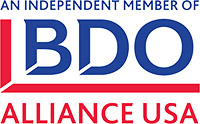
By Adam Cole, CPA, and Andrea Espinola Wilson
Amid the early stages of the COVID-19 pandemic, many nonprofits saw an increase in goodwill as individuals and organizations were inspired to give back in a time of crisis. Now, nonprofit leaders are looking to understand how they can maintain that goodwill — and many are turning to corporate volunteers.
1. FOSTERING A FEELING OF TOGETHERNESS
Though employees have widely embraced remote working, some employers are eager to get staff back in the office to maintain and even rebuild a sense of community and teamwork that they feel has been lost in remote or hybrid work environments. Nonprofit leaders can tap into this desire for togetherness by finding companies to partner with by positioning volunteering as a team-building exercise. Doing good for the world comes with a plethora of benefits — and when in the workplace, can help employees create deeper connections with each other.
2. TAPPING INTO THE ESG FOCUS
As the business world slowly shifts toward sustainable strategies to create long-term value, there is an opportunity for nonprofit leaders to be a part of this change. Though traditional environmental, social and governance (ESG) efforts are focused more on internal operational changes to make a business more sustainable, public-facing action can also improve the business’s reputation in the eyes of investors and stakeholders more broadly. Nonprofits whose mission is focused on sustainability and bettering the world can tap into this sustainability-driven mindset and work with corporate employers to build a better volunteer base while furthering their mission.
3. CATERING TO THE SOCIALLY CONSCIOUS GENERATION
Gen Z is now flooding into the workforce in droves, and its priorities are somewhat different from those of the generations they will coexist with in the workplace. Gen Z expects to feel a connection to work and wants a job to align with its members’ values — a LinkedIn Workforce Confidence Survey found that 69% of Gen Z would switch jobs to one that better aligns with their interests or values, as compared to 59% of millennials, 45% of Gen X and 40% of Baby Boomers.
Nonprofit leaders can tap into this need for organizations to cater to Gen Z job seekers by partnering with businesses looking to attract new talent. This helps the nonprofit ensure it has a steady flow of volunteers while also allowing the company to promote itself as community-focused and driven by more than just profit.
While COVID-19-related pressures still weigh on the nonprofit industry, new opportunities are on the horizon. Staying tapped into corporate volunteering trends can help nonprofit leaders build new and lasting relationships, ensuring they can continue to serve the communities they support and further their mission far into the future.
Article adapted from the Nonprofit Standard blog.
For more information, contact Adam Cole, Partner and National Co-Leader, Nonprofit & Education Practice, acole@bdo.com, and Andrea Espinola Wilson, Partner and National Co-Leader, Nonprofit & Education Practice, aewilson@bdo.com.




